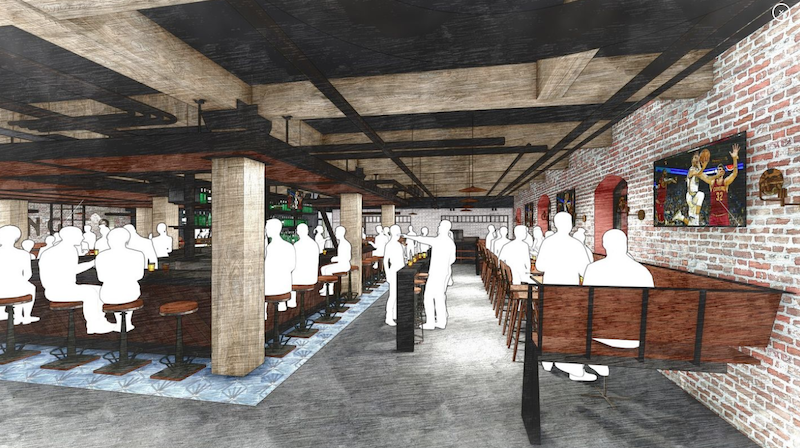Society views millennials in the same light that Homer Simpson views alcohol: they are the cause of, and solution to, all of life’s problems.
Every week it seems another article is released accusing millennials of killing something: department stores, fast food, and homeownership, just to name a few. But at the opposite end of the spectrum, millennials have also been credited with shirking the status quo and driving the global economy forward in new and unique ways.
San Francisco is often considered a haven for the stereotypical millennial, so it makes sense that a new tap room and brewery (how millennial is that?) in Ghiradelli Square has been designed to specifically cater to the millennial crowd. San Francisco Brewing Co.’s first tap room and brewery is a 12,000-sf restaurant with a 100-seat outdoor beer garden with fire pits and communal seating.
See Also: Miami International Airport is home to the first Johnnie Walker store in the U.S.
Designed by BCV Architecture + Interiors, the restaurant’s 22-foot shuffleboard table, ping pong tables, foosball tables, Pop-A-Shot, and cornhole boards were included specifically to attract more of the brand’s millennial clientele. Guests will also be allowed to use prepaid RFID cards to access taps and pour their own beer samples and take a look into the brewery to see how the process works (who are we kidding, they are probably all brewing their own beer at home and documenting the whole process on their blog).
The tap room and brewery uses a rustic, industrial design that incorporates timber framing and black steel accents from the existing building into the new design. The flagship tap room officially opened on May 9.

Related Stories
| Nov 25, 2013
Building Teams need to help owners avoid 'operational stray'
"Operational stray" occurs when a building’s MEP systems don’t work the way they should. Even the most well-designed and constructed building can stray from perfection—and that can cost the owner a ton in unnecessary utility costs. But help is on the way.
| Nov 19, 2013
Top 10 green building products for 2014
Assa Abloy's power-over-ethernet access-control locks and Schüco's retrofit façade system are among the products to make BuildingGreen Inc.'s annual Top-10 Green Building Products list.
| Nov 15, 2013
Greenbuild 2013 Report - BD+C Exclusive
The BD+C editorial team brings you this special report on the latest green building trends across nine key market sectors.
| Nov 15, 2013
Metal makes its mark on interior spaces
Beyond its long-standing role as a preferred material for a building’s structure and roof, metal is making its mark on interior spaces as well.
| Nov 13, 2013
Installed capacity of geothermal heat pumps to grow by 150% by 2020, says study
The worldwide installed capacity of GHP systems will reach 127.4 gigawatts-thermal over the next seven years, growth of nearly 150%, according to a recent report from Navigant Research.
| Oct 30, 2013
11 hot BIM/VDC topics for 2013
If you like to geek out on building information modeling and virtual design and construction, you should enjoy this overview of the top BIM/VDC topics.
| Oct 28, 2013
Urban growth doesn’t have to destroy nature—it can work with it
Our collective desire to live in cities has never been stronger. According to the World Health Organization, 60% of the world’s population will live in a city by 2030. As urban populations swell, what people demand from their cities is evolving.
| Oct 25, 2013
$3B Willets Points mixed-use development in New York wins City Council approval
The $3 billion Willets Points plan in New York City that will transform 23 acres into a mixed-use development has gained approval from the City Council.
| Oct 23, 2013
Gehry, Foster join Battersea Power Station redevelopment
Norman Foster and Frank Gehry have been selected to design a retail section within the £8 billion redevelopment of Battersea Power Station in London.
| Oct 18, 2013
Researchers discover tension-fusing properties of metal
When a group of MIT researchers recently discovered that stress can cause metal alloy to fuse rather than break apart, they assumed it must be a mistake. It wasn't. The surprising finding could lead to self-healing materials that repair early damage before it has a chance to spread.

















